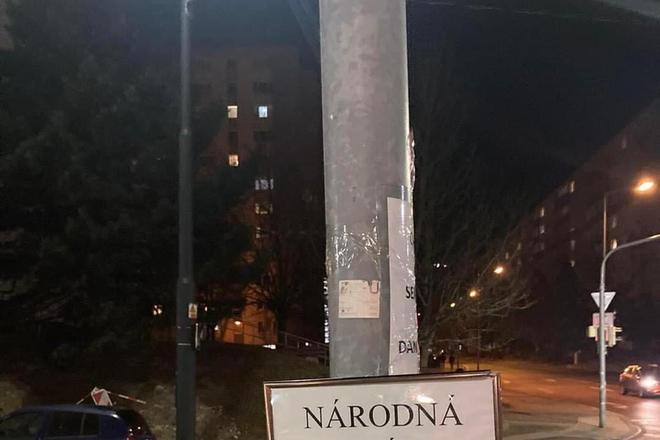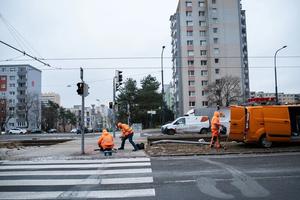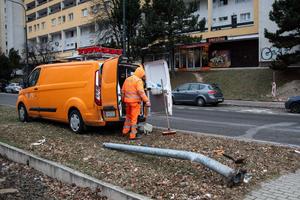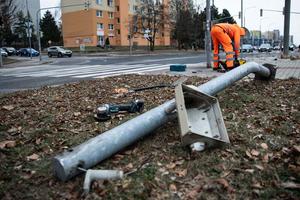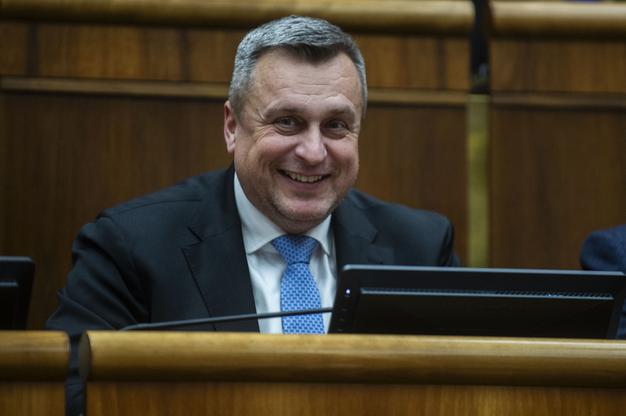He calls it an accident.
The opposition calls it a disgrace.
The police call it a matter for investigation.
But the case of Andrej Danko, his car and a Dúbravka traffic light pole is, I submit, more a work of performance art.
It is hard to imagine how a single incident could better encapsulate Slovakia's current, profoundly stupid, political moment – no small achievement, since Danko is competing against his own ministerial nominees, including a culture minister apparently at war with Slovak culture, not to mention the Slovak language, and an environment minister who seems convinced that bears represent the biggest threat currently facing the country.
But Kapitán Danko – to accord himhis official military rank, following his 2017 promotion – is not just an old soldier; he is, by Slovak standards, an old master and he paints on a broad canvas.
Skid marks
The agreed facts are as follows.
On the night of Thursday, January 11, our protagonist, who is the leader of the Slovak National Party (SNS) and deputy speaker of parliament, sets out by car in the Bratislava suburb of Dúbravka.
Only moments later, his car veers off the road and into a traffic light pole at a pedestrian crossing on the main road running through Dúbravka. The pole is located precisely where pedestrians would have been standing, had any been waiting to cross the road.
The collision topples the pole – in fact, the impact is violent enough to rip a hole in the undercarriage of the car, which begins leaking oil.
Danko drives off without calling the police and returns home, a short distance away in the same borough.
The collision has also torn off the car's registration plate, which, along with the trail of leaking oil, makes it almost comedically simple for the police to locate the offending vehicle. However, by the time they get to it, the car is in the garage and Danko is nowhere to be found (or, at least, refuses to answer his doorbell).
By the following morning news has leaked out (the incident wasfirst reported by news website Startitup.sk) and Danko swiftly releases a Facebook video saying, essentially, "my car skidded, happens to everyone, nothing to see here."
As of noon on Friday, January 12 – i.e. more than 12 hours after the collision – he has yet to contact the police or submit to a breathalyser test.
That's all you're getting
From this point on, it all gets very muddy as Danko improvises a makeshift, evolving and, above all, lawyerly defence of his conduct.
He is helped, naturally, by members of his SNS parliamentary caucus,who declare there to be nothing wrong with his conduct.
Also of assistance are the police, who prove curiously unwilling to confirm who knew what or when. Responsibility for the investigation immediately starts being passed between their various branches and teams like a hot potato.
By 18:00 on Friday the police are still refusing to confirm if Danko has been breathalysed. It later emerges that he was tested that afternoon, returning a negative result – but no blood sample is taken, which might have provided evidence of earlier intoxication. No explanation is given for the omission.
After initial reporting that the crossing was not monitored, we learn days later that the police actually have camera footage of the collision. This could presumably prove whether Danko's claims of a "skid" – the weather was cold, but no other accidents were reported at the site – bear any relation to reality.
His hands are tied
Interior Minister Matúš Šutaj Eštok (Hlas), after initially making light of the incident, promises that the video will be made public. Police and prosecutors promptly overrule him, with the Bratislava Regional Prosecutor's Office declaring this to be "impossible". The man who cansack police chiefs and whose government is seeking to scrap whole departments of the prosecution service is apparently powerless to order the release of a video.
(Awkwardly for the police, they had releasedvideo of a potentially far worse traffic incident at around the same time. The perpetrator is identified as a Bulgarian, who presumably lacks Danko's connections.)
Further, piquant details emerge. In a TV interview on Sunday, January 14, Danko – his insistence that demolition of a pedestrian crossing does not merit a call to the police is by now sounding ever feebler – pivots to a medical defence. The crash had left him "seriously injured", he avers, leaving him with no alternative but to return home to tend to his wounds.
He refuses to specify the nature of his injury, implying that to even ask such a question would be to impugn the honour of a gentleman.
However, we later learn that he supposedly lost some teeth.
This is implausible on several levels. It is basically impossible for someone who is wearing a seatbelt to lose teeth in a collision that does not trigger the airbag (and a car whose front airbag has deployed is undriveable, which was clearly not the case here). Readers may also wish to review the Facebook video that Danko posted just hours after the collision (it's at the end ofthis Sme daily story) and decide for themselves if he was really at death's door.
Sme reports that there is no record of any call to the emergency services on the night of the crash. (And, rather inconveniently, Danko has previously answered a TV reporter's question about his health by cheerfully remarking that he is "fine".)
Are you the owner of this vehicle, sir?
Danko also mentions that he was "testing" the car in question on the night of the crash. The mind boggles. Who asked him to "test" it? Does he often "test" cars? (One hopes not.) And where can we read the results of this unexpectedly rigorous evaluation?
In the midst of all this, Danko announces, almost as an afterthought, that he is running for president.
One of the more serious candidates for that office, Hlas leader and Speaker of Parliament Peter Pellegrini (the target of somepretty offensive jibes from Danko earlier in the month), declares portentously that Danko, if found guilty of an offence, must take "political responsibility" (a delightful concept, beloved of Slovak politicians, that should not be confused with actual responsibility) and resign.
I can predict with some confidence that this will not happen any time soon.
Nothing to see here
Danko's winking shamelessness tells us all we need to know about how the political atmosphere has changed in recent weeks.
No one who drives a car in Slovakia believes for a moment that if you bring down a lamppost, let alone a traffic light, you are not supposed to call the police.
And as any viewer of the Sunday evening "krimi" news programme – which, by some unwritten law, always leads on the previous night's most lurid drink-driving arrests – will tell you, if you do decide to do a runner, it is wisest not to leave your registration plate at the scene of the crime.
Danko does not have to worry about rookie errors like this: the normal rules do not apply to him. He clearly expects to suffer no serious legal consequences; on the political side, he may even win some kudos among his conspiracy-raddled base.
He and his fellow travellers have observed, as Sme editor Jakub Filocommented recently, that no one seems to find it strange any more that politicians lie brazenly – and a large part of the public applauds them quite uncritically when they do.
But what does he have to lose? Dankospent years flirting with a woman later convicted of arranging the cold-blooded execution of a journalist. When this came out, he said it was none of the public's business.
Clearly, some of the public agreed: he is back in parliament, nominating ministers, and now running for president.
And for my next trick
There is, for now, some consolation.
He has no chance of becoming head of state, and this latest performance has turned out to be more of a comedy than a tragedy given that, mercifully, no one was hurt (Danko's late-onset dental trauma notwithstanding).
We can look forward to more such performances in the weeks and months to come. Sadly, not all will be victimless crimes.


